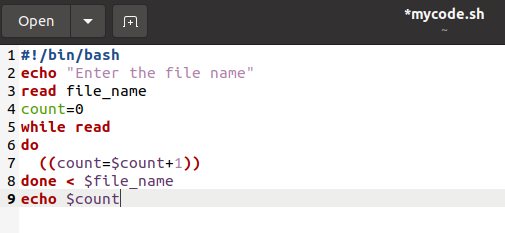In Linux, there are different methods to count the number of lines in the files, all of these methods are discussed in this article in detail.
How to count lines in the file in Linux
We have a text file in the home directory with the name “myfile.txt”, to display the contents of the text file, use the command:

Method 1: Using the wc command
The one method to count the number of lines is by using the “wc” command with the “-l” flag which is used to display the count of lines:
You can also use the wc command with the cat command to display the count of lines of a file:
Method 2: Using the awk command
Another method to count the lines of the file in Linux is by using the command of awk:
Method 3: Using the sed command
The “sed” command can also be used in Linux to display the line count of the file, the use of the sed command for the purpose of displaying a number of lines is mentioned below:
Method 4: Using the Grep command
The “grep” command is used to search, but it can be used for counting the number of lines as well as to display them, for this purpose, run the following command and replace the “myfile.txt” with your file name in the command:
In the above command, we have used the “-c” flag which counts the number of lines and “.*” is used as a regular pattern or we can say to find out the strings in the file, another way to use the grep command such that it also displays file name in output is the use of the “-H” flag:
Method 5: Using the nl command
The number line command (nl) is used to display the numbered bullets with the lines of the file:
If you want to display just the number of lines, then use the awk command with the nl command:
Method 6: Using the Perl language command:
Perl language command can also be used for the counting of the lines of the files in Linux, to use Perl command to count the lines of the file “myfile.txt”, execute the command:
Method 7: Using While loop
Another most commonly used method to count the number of lines of the large files is using the while loop. Type the following bash script in the text file, and save it with .sh extension:
echo "Enter the file name"
read file_name
count=0
while read
do
((count=$count+1))
done < $file_name
echo $count
Execute the bash file using the bash command:
In the above output, on the execution of the command, it asks for the file name whose lines are to be counted, types the file name, in our case, it is “myfile.txt”, so it displays the results.
Conclusion
To calculate the productivity of the programmers, the main parameter is the length of their code, which can be measured by counting the lines of the code file. In Linux, we can count lines in different ways that are discussed in this article, the most commonly used method is the wc command method.











